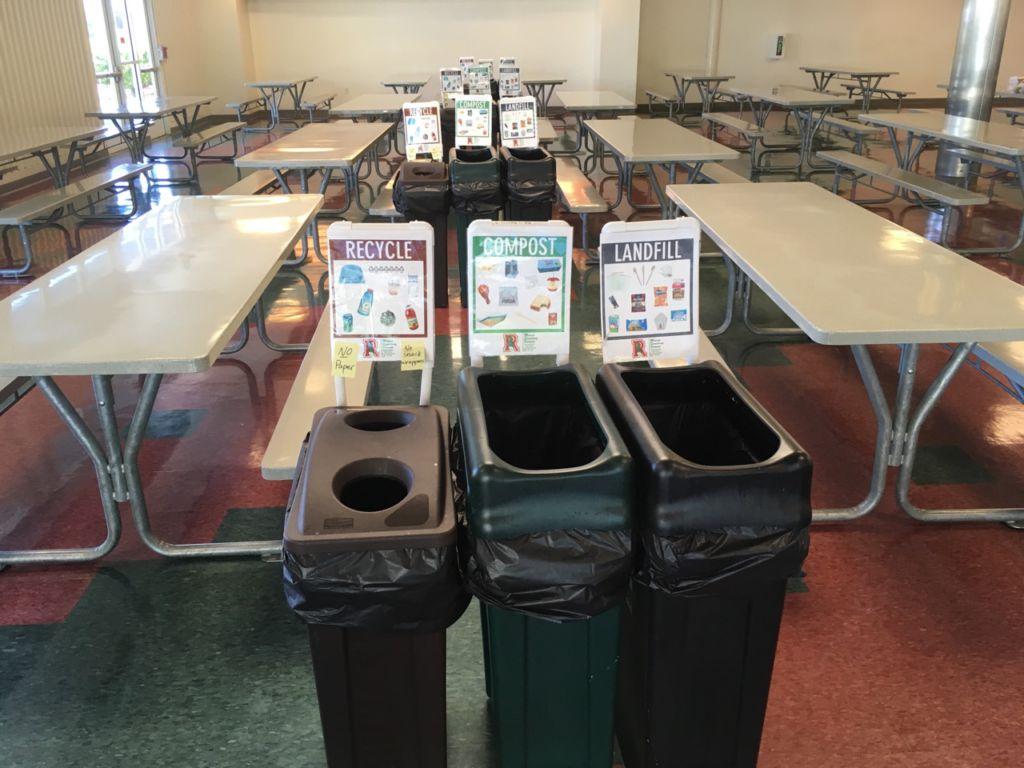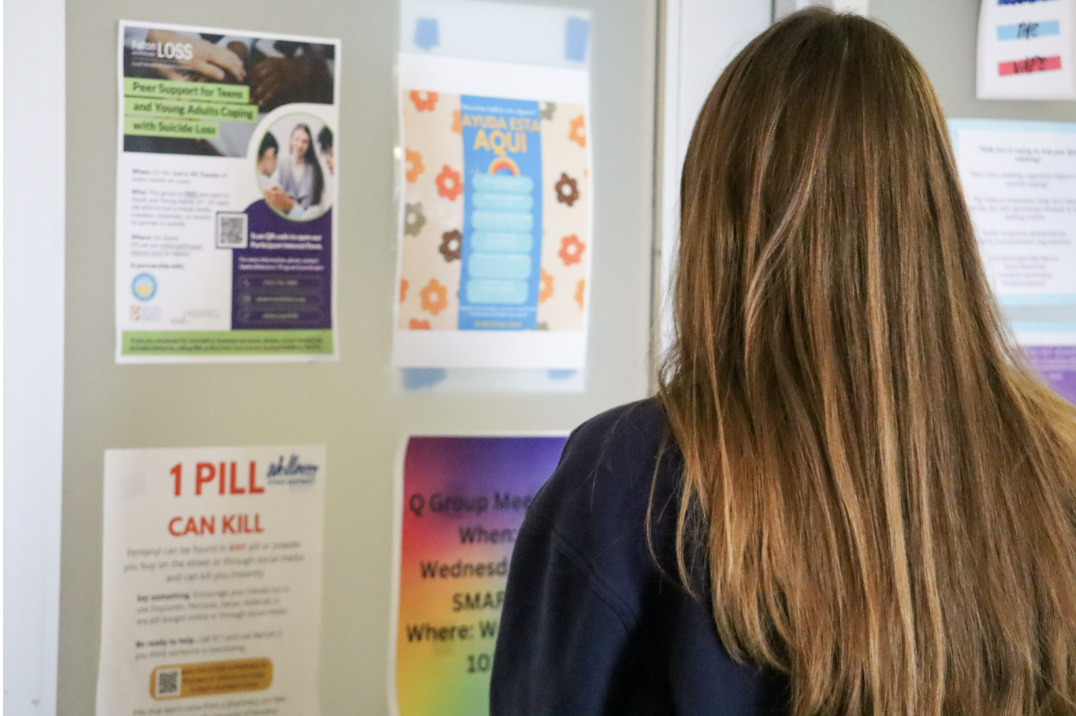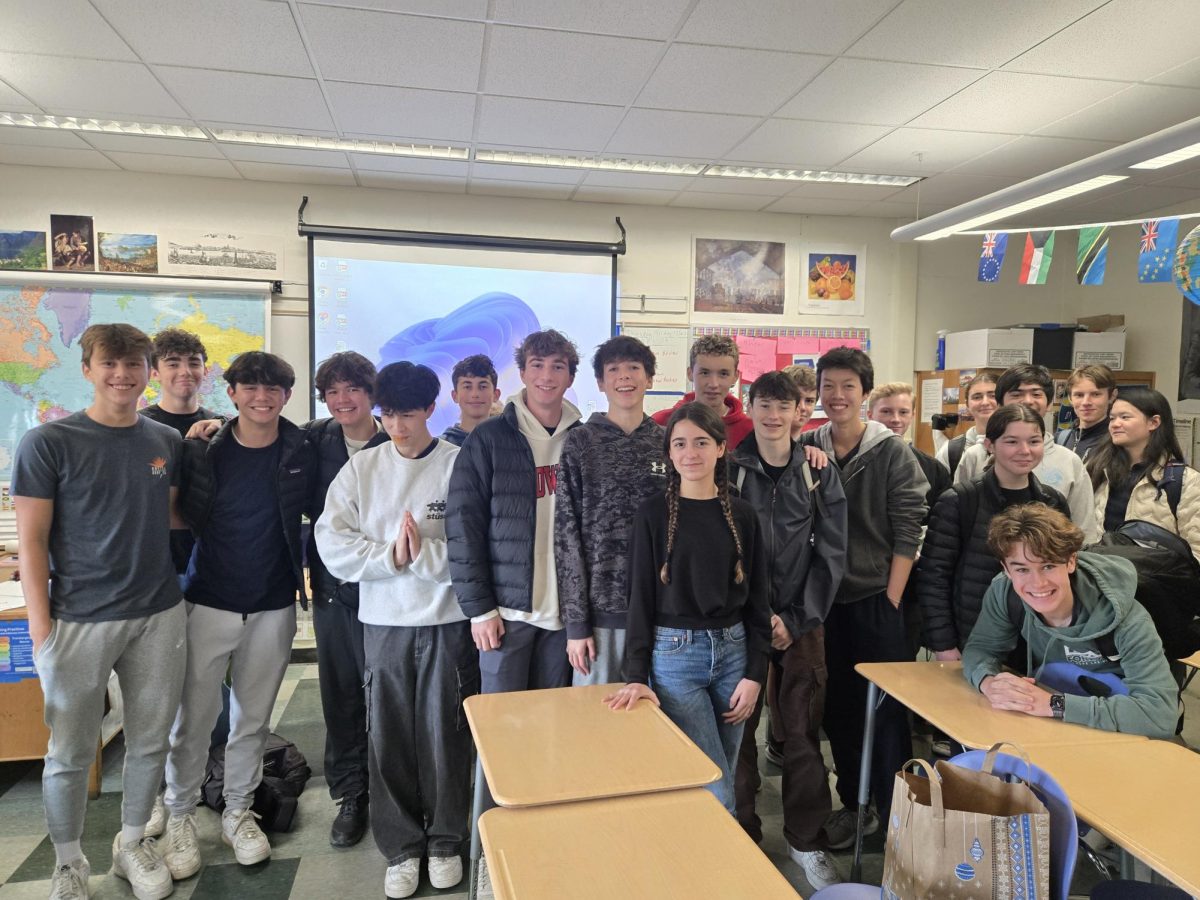Redwood’s next step in sustainability: Dealing with undiverted waste
June 9, 2017
On a sunny day, the clouds part to reveal the mountainous terrain of Marin County which is just one aspect of the natural beauty of the community. Marin’s mild climate and abundance of natural reserves like Mount Tamalpais and Muir Park are what make the county such a unique and attractive setting. However, an upsurge of environmental concerns are haunting the county’s image.
Zero Waste Marin is a local organization that aims to reduce Marin County landfill waste to zero percent by the year 2025. According to Zero Waste Marin’s Zero Waste specialist Casey Poldino, Marin County currently has issues with waste which she attributes to the materialistic wealth of the community.
“We, on average, produce 4.4 pounds of waste per person/per day. There is more money here than many counties in our country, and money leads to purchasing which will have an effect on our waste and waste stream,” Poldino stated via an email interview.
The Marin Sanitary Service’s curbside trash collection program receives around 200 tons of recyclable, compostable and landfill material a day from their residential and commercial customers. Contrary to popular belief, the Marin Sanitary Service does not sort through landfill waste which could be comprised of recyclable and compostable materials. Via email interview, Izzy Parnell-Wolfe, the Marin Sanitary Service’s education coordinator, noted the findings of a 2014 Marin Sanitary Service study on the collection of this waste.
“Of the material that we receive in the transfer station from our residential customers, approximately 60 percent of it could have been composted,” Parnell-Wolfe stated via email.
Study findings regarding the Marin Sanitary Service’s commercial customers’ landfill waste, including local schools, concluded that 40 percent of this material was food waste that could be composted. For both residential and commercial customers, 20 percent of this landfill waste was able to be recycled between these two customers. In the Marin Sanitary Service’s transfer station, where the landfill waste is dumped in preparation for its transfer to the Novato landfill, Parnell-Wolfe claims this lack of diversion is visibly and audibly present.
“I hear glass breaking all the time, yard debris; I can smell the food rotting. All these materials that are divertible are still going to our landfill which is problematic,” Parnell-Wolfe said.
The Marin Sanitary Service currently partners with Zero Waste Marin. Parnell-Wolfe and Poldino have made a devoted effort to educate students about the importance of properly disposing waste in order to strive for the zero waste goal.
“We try and really get out face to face with our customers and encourage people to utilize recycling and compost bins so that they’re not just throwing everything away to the landfill,” Parnell-Wolfe said.
Both the Marin Sanitary Service and Zero Waste Marin are making an effort to partner with local Marin schools. According to Poldino, there are currently over 100 school sites in Marin County, and they cumulatively produce large amounts of paper and food which may be diverted into recycling and composting bins respectively.
“We created the Zero Waste Schools Program to decrease waste in schools, educate our students on the issues surrounding landfill, including methane gas emissions, and create an environment where our children can help educate their parents,” Poldino said via an email interview.
Redwood’s Advanced Placement Environmental Science, Sustainable Agriculture teacher and Environmental Action Club supervisor, Joe Stewart, credited a new California law with prompting school administrators to more actively work with Environmental Action Club students to implement more organized waste disposal programs. Assembly Bill No. 1826 was made into a state law that as of January 1, 2017 and requires schools and other public entities who produce four or more cubic yards of waste each week to implement a system that effectively diverts their waste as recycling, compost and landfill.
“Now the administration is really behind [the pilot program] and is helping organize it and helping run it. So that is making a difference,” Stewart said.
The Marin Sanitary Service pilot program was the product of this effort and may be found in the school’s covered eating area (CEA). The pilot program’s waste disposal set-up features multiple rows of recycling, composting and landfill containers between the lunch tables. Each bin is marked by a sign that labels each bin as composting, recycling or landfill.
Redwood High School juniors Anna De Somma and Isabella Karman from the school’s Environmental Action Club were the first to reach out to Parnell-Wolfe about implementing a program to help reduce waste in the fall of the 2016-2017 school year. Months into the program, both students have been disappointed by the poor diversion rates calculated by waste audits from the CEA. The Environmental Action Club audit data from March 14, 2017 found that 71.3 percent of waste from 11 landfill bags was compostable and 7.3 percent was recyclable. The club has taken positive steps to help resolve this problem.
“We have monitors from Advanced Placement Environmental Science classes and the Environmental Action Club monitoring these bins during lunchtime to help students properly dispose of their waste,” De Somma said.
However, Parnell-Wolfe, De Somma and Karman note that the success of the diversion percentages lies in the hands of the student body as well as the Environmental Action Club members, school staff and school administration that helped implement the program.
“I’d like to see that shift more next year is to have everyone feel like they actually have some ownership in this program and realize that it does connect to you whether or not you played a direct role starting the program,” Parnell-Wolfe said.
De Somma and Karman believe that Redwood’s efforts to improve diversion rates has a greater meaning for Marin County as a whole. According to De Somma, Redwood’s CEA pilot program is currently the only organized waste diversion program of its kind at any public high school in Marin County. Redwood’s pilot program is the example for any future programs that may arise in the county. If the pilot program continues to produce unsuccessful diversion results like the March 14, 2017 audit, local high schools may believe that implementing a similar program would be insufficient at their school as well.
“Redwood is really setting the example, so if Redwood proves that a program like this can’t be done, then it’s not going to happen anywhere else,” De Somma said.






